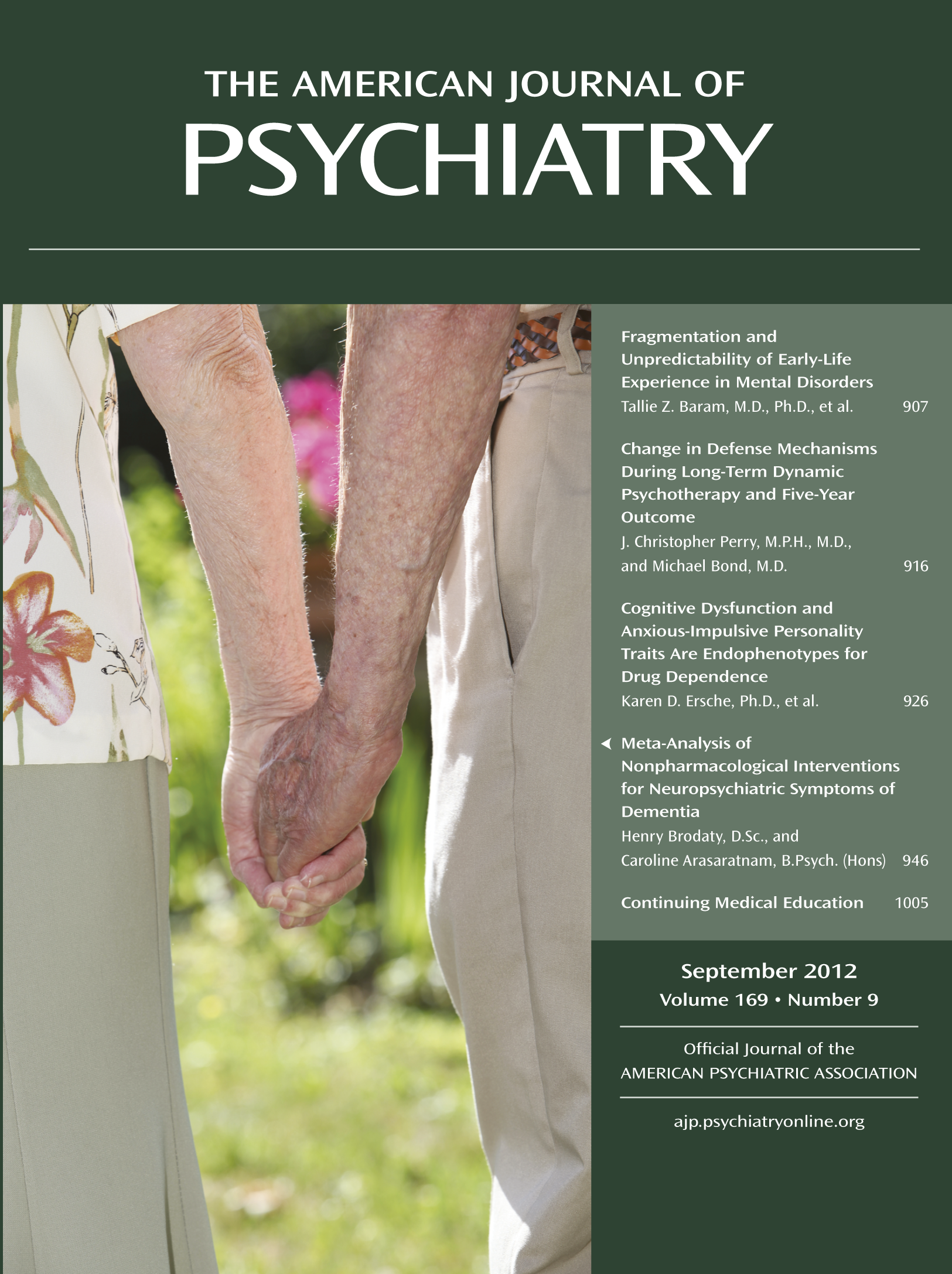The approach of translating neuroscience advances into clinical research represents the best strategy toward innovative interventions, as opposed to the more typical “me too” approach to drug development.
At those times when I slow down enough to reflect on the current state of psychiatry and my own clinical experiences since I completed residency 20 years ago, I am struck by how much we have learned yet how relatively little we have advanced. Although we have a number of new medications and therapies, most of these are from the same general drug classes or psychotherapy models that I used in residency, e.g., dopamine antagonists for psychosis or cognitive-behavioral therapy for anxiety. Most of these were based on serendipitous discoveries. Consequently, the management of major depression remains little changed over the last two decades (
1); the general approach is still to increase the concentration of monoamines serotonin and norepinephrine in the synapse, generally through reuptake inhibition (even though the initial increases seem to have little to do with the eventual antidepressant response), and then add some cognitive-behavioral or other evidenced-based therapy to try to improve outcome. The drugs are a bit different now from those in use when I was in training, e.g., fluoxetine is more specific than nortriptyline and perhaps better tolerated, but the general mechanisms of action are largely the same. This state of affairs would be fine if our depressed patients were robustly improving, but only one-half to two-thirds of patients respond to a specific intervention, often only after multiple treatment trials (
2); response tends to be slow, on the order of 6–12 weeks; and many individuals develop side effects. Additionally, if a patient does not respond to the first intervention, subsequent interventions are mostly “more of the same” and do not promise robust outcomes (
2). Clearly, we need a paradigm shift in treatment development in order to make meaningful advances in how we care for depressed patients.
Lyoo et al. (
3) in this issue provide just such an example of an innovative approach to developing new treatments for major depression. In this study, the investigators relied on a growing database that demonstrates that bioenergetic abnormalities in the brain may underlie aspects of the development of depression. Moreover, they note that brain bioenergetics can be influenced; for example, increases in brain creatine reserves are thought to shift brain creatine kinase activity, thereby increasing ATP production, perhaps improving brain bioenergetics in depression (
2). A previously studied rodent model suggested that creatine may have antidepressant effects, at least in female animals (
4). On the basis of these hypothetical considerations and preclinical findings, the investigators initiated a double-blind, placebo-controlled clinical trial of creatine augmentation of escitalopram in depressed women. Creatine augmentation was well tolerated and significantly improved escitalopram response by as early as the second week of the 8-week trial. Augmentation with creatine appeared to accelerate treatment response by approximately 2 weeks and may also have contributed to an overall greater response rate, although a longer follow-up would be needed to determine if that was true. Regardless, this study is unusual in that it translated preclinical neuroscience into a potentially novel antidepressant strategy, very different from the standard emphasis on monoamine uptake inhibition or serendipity.
Limitations in the study must be considered before everyone starts prescribing creatine to their patients. The study group was limited to Korean women who were mostly first-episode, treatment-naive patients. This group is obviously very narrow. First-episode patients may be particularly treatment responsive and are not representative of individuals with recurrent affective episodes or treatment-resistant depression, who constitute the bulk of most psychiatric practices. Also, the animal model of creatine treatment was successful in females but not males, which suggests that this treatment may be useful only for women. Although of heuristic interest for how we think about sex differences in the mechanisms of depression and psychiatric illness, unfortunately, in the absence of men in the study, this interest cannot be examined. A next step is to determine whether creatine alone might also be an antidepressant or whether it works only in conjunction with a selective serotonin reuptake inhibitor (SSRI); if the latter, the neurobiological underpinnings are different from those of effective creatine monotherapy. Clearly, more work is needed to determine the role of creatine in the treatment of depression. Nonetheless, the approach of translating neuroscience advances into clinical research represents the best strategy toward innovative interventions, as opposed to the more typical “me too” approach to drug development that has been rife in psychiatry during the last 20 years.
During the same 20 years that antidepressant therapy has minimally advanced, our understanding of the brain has exploded, especially because of increasing knowledge of the functional neuroanatomic, molecular, and genetic control of emotional network function and the neural basis of affective illness (see, for example, references
5–
7). What has lagged is applying this new information in order to identify novel interventions for depression. One alternative goal has been to try to personalize treatment by identifying subpopulations of depressed patients who respond differently to different treatments; however, attempts to meet this goal are limited by a collection of medications that essentially share the same mechanism of action (i.e., SSRIs). Recent innovations using neuromodulatory therapies (e.g., repetitive transcranial magnetic stimulation [
8], ketamine administration [
9], or circadian rhythm regulation [
10]) are beginning to challenge standard models of depression, partly on the basis of advances in neuroscience, thereby providing alternatives to permit personalization and, in the process, refine different neurophysiological models for depressive disorders. A paradigm shift in the treatment of depression is overdue, and translational neuroscience, like that presented in this issue (
3), presents a step toward that end. Perhaps this study will inspire others to use a similar translational approach leading to a significant advance in how we manage folks with major depression.

